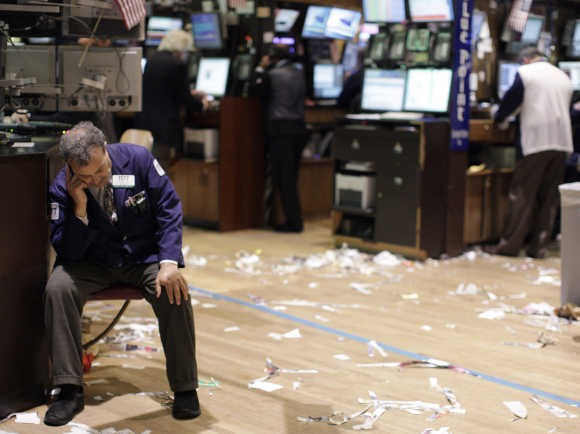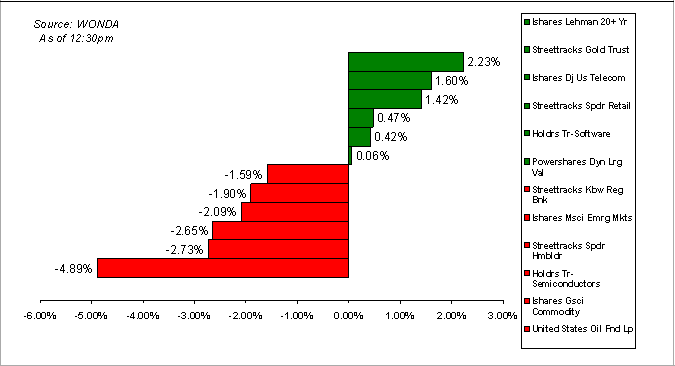Aramanth Advisors
Post on: 21 Июнь, 2015 No Comment

Definition:
According to Till, H. (2007), Amaranth Advisors, LLC was founded in 2000 by Nick Maounis and was a multi-strategy hedge fund headquartered in Greenwich, Connecticut.
Convertible bonds was the founder’s original expertise, that later became involved in long-short equity, merger arbitrage, leveraged loans, blank-check companies, and in energy trading. Energy trades accounted for about half of the fund’s capital and generated about 75 percent of its profits, as of June 30th of 2006, and market participants were made aware of a large hedge fund’s distress, on September 18th, 2006.
Nick Maounis had issued a letter to his investors informing them that the fund had lost an estimated 50% of their assets month-to-date, on that date. By the end of September 2006, these losses amounted to $6.6-billion, making Amaranth’s collapse the largest hedge-fund debacle to have thus far occurred.
The Amaranth Collapse: What we Learnt
According to Cuillerier & Fleitas (2008), the ‘Commodity Futures Trading Commission’ (CFTC) has changed Amaranth Advisors, LLC (‘Amaranth’) and trader with manipulation of the natural gas futures market.
In the other hand, the ‘Federal Energy Regulatory Commission’ (FERC) has issued an order to show causes asserting that Amaranth intentionally manipulated the price of natural gas futures contacts.
This paper provided a brief overview of the natural gas markets, the scope of the CFTC’s jurisdiction and the FERC’s jurisdiction over the natural gas market and the jurisdiction over Amaranth and its traders who were trading exclusively on the futures market.
The Commodity Futures Trading Commission (CFTC) charged hedge fund Amaranth Advisors, LLC (Amaranth) and its former head energy trader, Brian Hunter, with intentional and unlawful manipulation of the natural gas futures market, on 25th July, 2007. [1]
The CFTC alleges the attempted manipulation of the price of the New York Mercantile Exchange (NYMEX) Natural Gas Futures Contract (NG Futures Contract) on two occasions: on 24th February, 2006 and 26th April, 2006, in its complaint. [2]
The Federal Energy Regulatory Commission (FERC) issued an order to show cause on the very same facts, on the day after the charge, on 26th July, 2007. The facts are as follows.
The defendant, Brian Hunter, instructed another Amaranth trader to be certain that Amaranth acquired sufficient futures to sell during the closing range on the next day, on 23rd February, 2006. [3]
Amaranth had reversed its March 2006 NYMEX NG Futures Contract positions from being short more than 1,700 to being long on more than 3,000 March 2006 NYMEX NG Futures Contracts, before the last 30 min of trading on 24th February, 2006. [4]
During the closing range, Amaranth sold the March 2006 NYMEX NG Futures Contracts. [5]
Amaranth held large short natural gas that is relevant because, as the complaint noted, the settlement price for ICE swaps is based on the NYMEX NG Futures Contract settlement price. [6]
NG Futures Contract expiry day, Amaranth again reversed its May 2006 NYMEX NG Futures Contract positions from being short to being long in excess of 3,000 May 2006 NYMEX NG Futures Contracts, a few days before the May 2006, on 26th April, 2006. [7]
Amaranth sold its May 2006 NYMEX NG Futures Contracts, during the closing range where with this sale, Amaranth attempted to lessen the impact of a buyer who intended to purchase a large number of NYMEX NG Futures Contracts, which would have adversely affected Amaranth’s short swap positions on the ICE. [8]
The CFTC alleges that the defendants intended to lower the price of the NYMEX NG Futures Contract to benefit their larger swap positions on the ICE, in its complaint. [9]
Moreover, the CFTC also claims that Amaranth attempted to cover up its actions by making false statements to NYMEX. [10]
The FERC issued an order to show cause on the same set of underlying facts, asserting that Amaranth intentionally drove down the price of natural gas futures contracts, on 26th July, 2007. [11]
The FERC declares that Amaranth’s manipulation of the futures market ‘had a significant impact on physical markets’ over which the FERC has jurisdiction. [12] Also alleges that this, in turn, ‘had a significant impact on physical markets, thereby affecting a substantial volume of FERC jurisdictional natural gas transactions’.
The FERC alleges that the traders manipulated the price knowing that the settlement price is used to price the physical market and also alleges that Amaranth and its traders intentionally manipulated the NYMEX NG Futures Contract to produce artificial settlement prices [13]. in the order to show cause.
The FERC specifically charged Amaranth engaging ‘in any act, practice or course of business that operates or would operate as a fraud or deceit upon any entity’ and charged Amaranth with violating its anti-manipulation rule prohibiting the employment of ‘any device, scheme or artifice to defraud’. [14]
Lastly, the FERC is seeking remedies for these violations, including disgorgement of profits and civil penalties.
Till, H. (2007) explored the following questions, on the article “The Amaranth Collapse (…)”: “How could a well-respected hedge fund implode so quickly? Could this multi-strategy hedge fund really have become one big bet on winter natural gas prices? How could Amaranth have amassed such huge derivatives positions in natural gas, comparable in size to nationwide residual natural gas consumption, without any regulators noticing? Given the scale of Amaranth’s losses, why didn’t this debacle lead to wider systematic distress in the financial markets? That seemed to be a key worry following Long-Term Capital Management’s (LTCM’s) massive losses in 1998. Why didn’t that worry apply with Amaranth’s troubles?”
The answers to these questions are as follows, in summary:
- With positions across asset classes, although Amaranth was technically a multi-strategy hedge fund, by 2006 it had devoted a large fraction of its risk capital to natural gas trading;
- Natural gas has attracted a number of non-traditional financial participants during the past three years, including Amaranth once other arbitrage opportunities had become less lucrative and offered hedge funds a potentially alluring combination of volatility and scalability;
- It is possible for even one large hedge fund to overwhelm the Commodity derivatives markets because they are relatively small compared to global asset values, that happened with Amaranth’s large-scale natural gas trading;
- The regulatory covering energy trading has had a noteworthy gap in coverage: the Commodity Futures Trading Commission (CFTC) are the regulator of the exchange traded futures markets and the physical natural gas markets are regulated by the Federal Energy Regulatory Commission (FERC), but over-the-counter energy derivatives trading has not been subject to the same regulatory scrutiny. Amaranth carried out a substantial fraction of its trading, on such platforms;
- Counterparties did step in quickly to assume Amaranth’s positions, which immediately stabilized the natural gas market, unlike the LTCM crisis;
- Amaranth’s core risk positions were not similar to those held by the international money-center banks, at the time of Amaranth’s implosion.

Powered by SEO
Hedge Fund Failures
References:
Till, H. 2007, “The Amaranth Collapse: What Happened and What Have We Learned Thus Far?”, Principal, Premia Capital Management, LLC and Research Associate, EDHEC Risk and Asset Management Research Centre
Cuillerier, I. and Fleitas, K. 2008, “Journal of Derivatives & Hedge Funds”, Palgrave Macmillan Ltd, Volume 14 Number 2, pp. 70–77:
1 U.S. Commodity Futures Trading Commission vs Amaranth Advisors, LLC. 2007 U.S. Dist. LEXIS 80978, at *2 (S.D.N.Y. 1st November, 2007).
2 3 Complaint for Injunctive and other Equitable Relief and Civil Monetary Damage Penalties under the Commodity Exchange Act at 6, Amaranth. 2007 U.S. Dist. LEXIS 80978 (07 CIV 6682).
4 Complaint at 6, Amaranth (07 CIV 6682).
5 Id. at 5. The closing range is the last 30 min of trading for a given contract on an expiry date. The settlement price of a NYMEX NG Futures Contract is determined by the volume weighed average of the trades executed during the closing range (between 2:00–2:30 p.m.) on the expiry day of such contracts.
6 Complaint at 5–6, Amaranth (07 CIV 6682).
7 Id. at 9.
8 Id. at 9–10.
9 See, Id. at 1 (summarising the allegations against Amaranth).
10 Id. at 1–2.
11 Commodity Exchange Act y 6, codified at 7 U.S.C. y 6 (2007).
12 Amaranth. 2007 U.S. Dist. LEXIS 80978, at *3.
13 Amaranth. 2007 U.S. Dist. LEXIS 80978, at *8 (quoting, FERC Mem. 13).
14 Id.
15 Order to Show Cause and Notice of Proposed Penalties at 3, Amaranth. 2007 U.S. Dist. LEXIS 80978 (IN07-26-000).
17 Amaranth, 2007 U.S. Dist. LEXIS 80978, at *3.
[1] U.S. Commodity Futures Trading Commission vs Amaranth Advisors, LLC. 2007 U.S. Dist. LEXIS 80978, at *2 (S.D.N.Y. 1st November, 2007).
[2] These were the last days of trading for the given futures contract, which days are known as the ‘expiry day’ of the contract.
[3] 3 Complaint for Injunctive and other Equitable Relief and Civil Monetary Damage Penalties under the Commodity Exchange Act at 6, Amaranth. 2007 U.S. Dist. LEXIS 80978 (07 CIV 6682).














